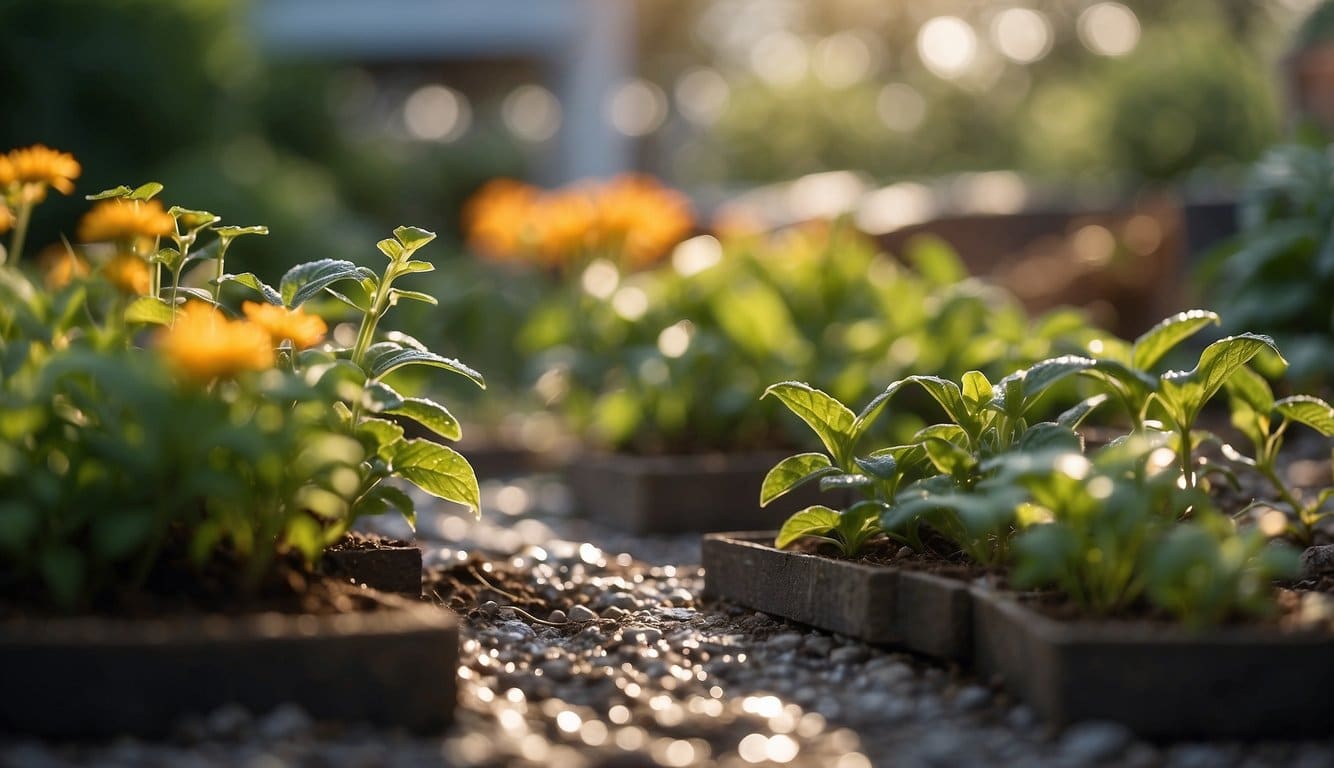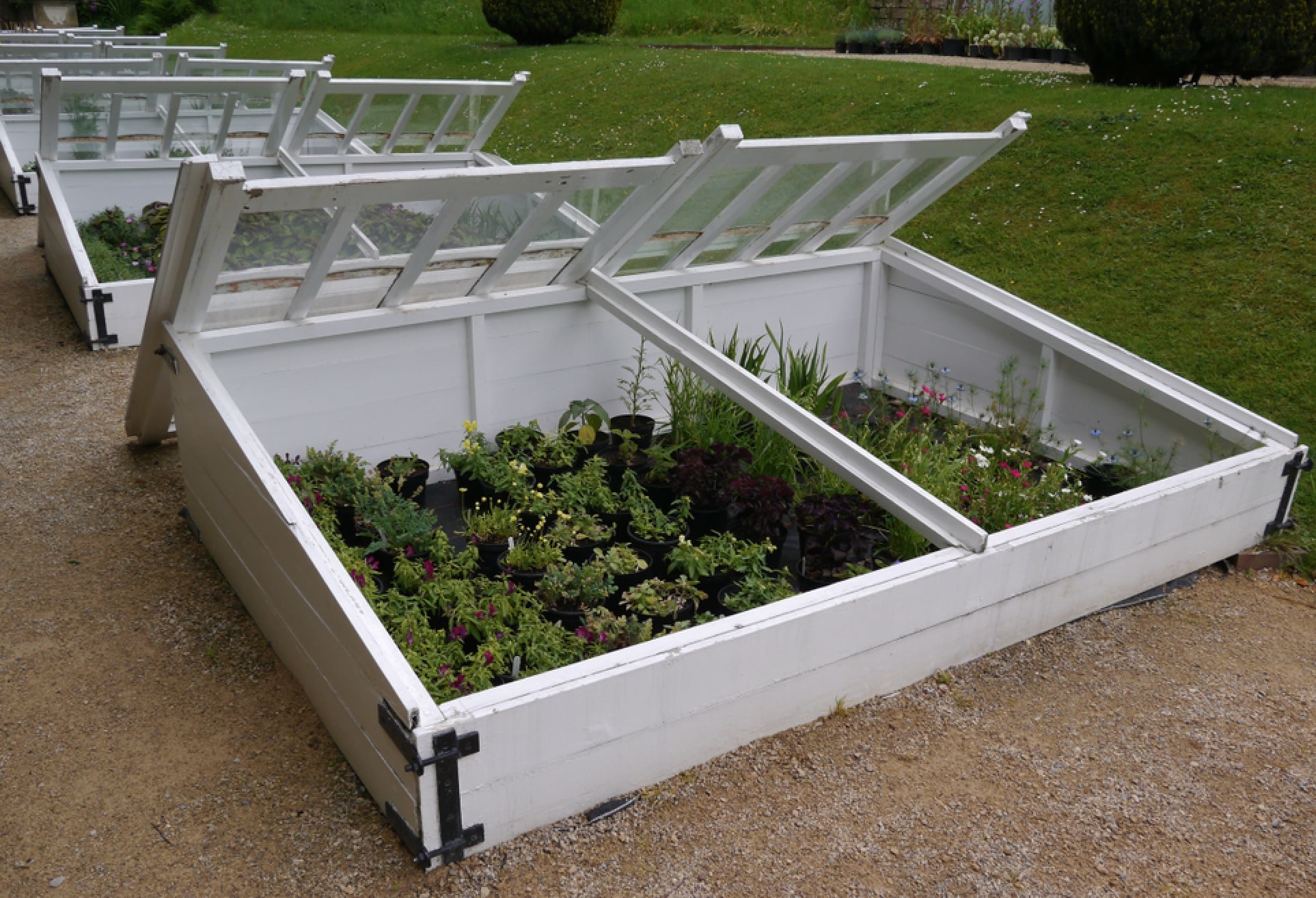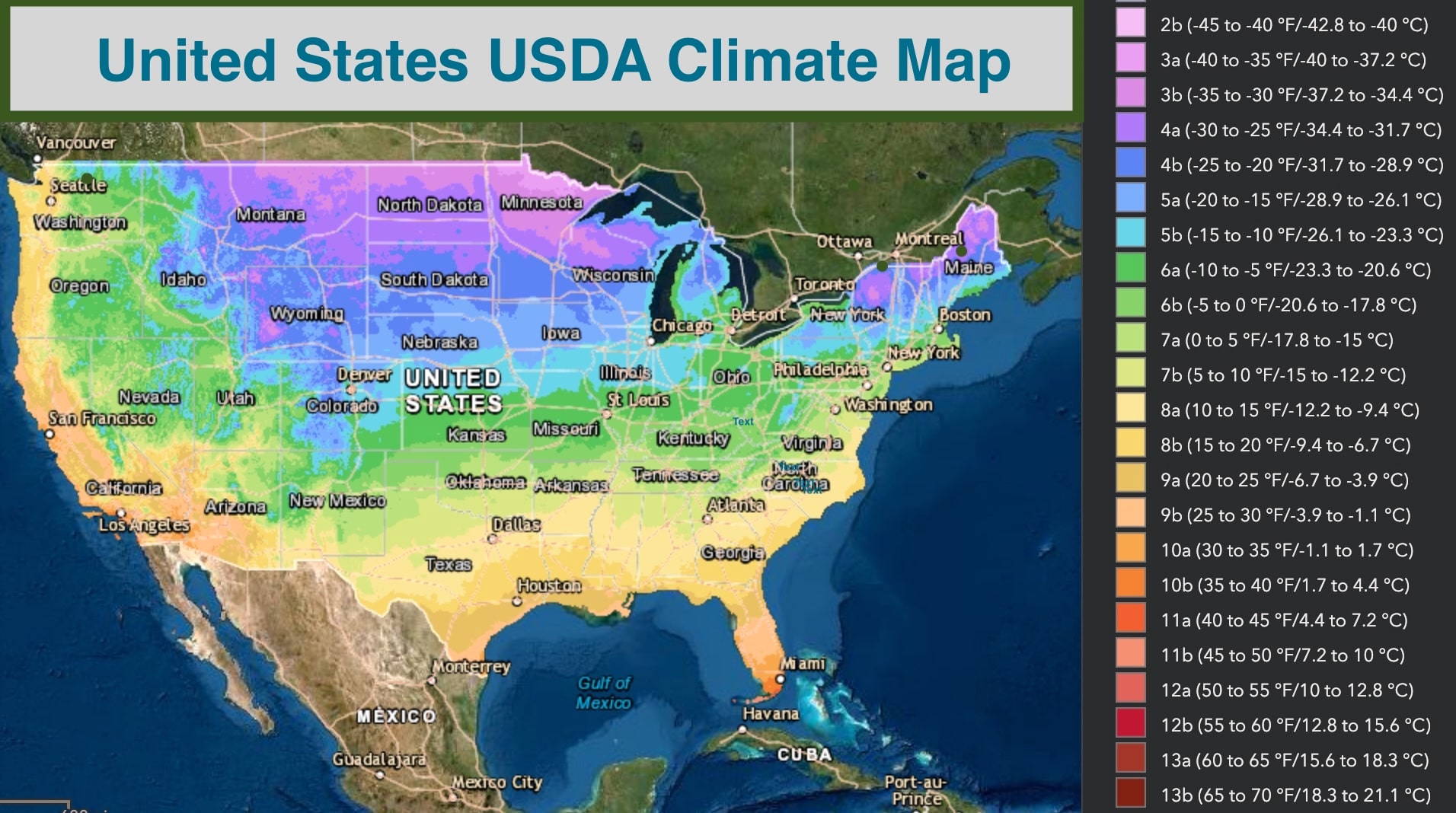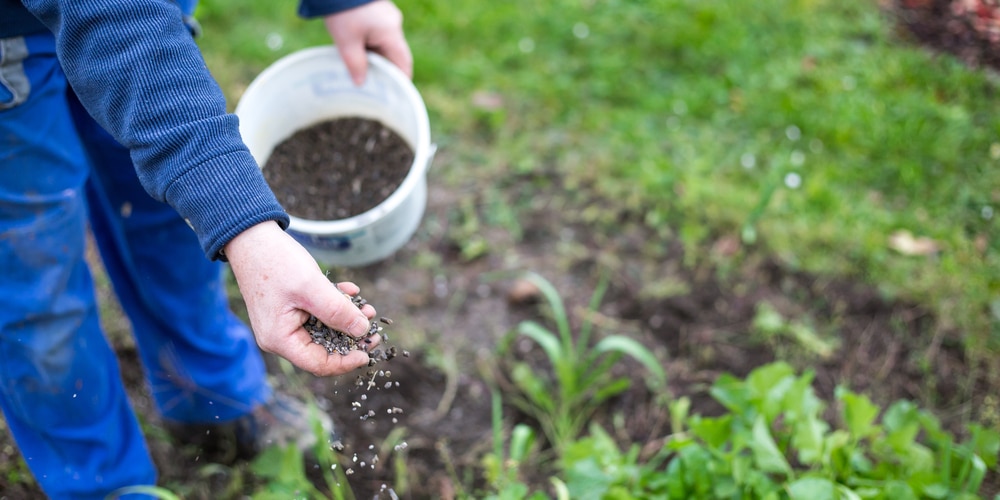1. Know Your Illinois’ Weather Patterns

Successful gardening in Illinois depends on your grasp of the state’s diverse weather patterns. Here’s a professional dive into the climate dynamics and what they mean for your garden.
Climate Zones and Variability
Illinois encompasses three primary USDA Plant Hardiness Zones: 5, 6, and 7.
- Zone 5: Northern Illinois
- Expect longer winters and cooler early springs.
- Average low temperatures: -20°F to -10°F
- Zone 6: Central Illinois
- Shorter winters and milder springs than Zone 5.
- Average low temperatures: -10°F to 0°F
- Zone 7: Southern Illinois
- The mildest winters and earliest spring in the state.
- Average low temperatures: 0°F to 10°F
The variability across these zones will affect your planting dates and the types of plants that can thrive.
Average Temperature and Precipitation
It’s essential to consider typical temperature ranges and precipitation as they fluctuate seasonally.
- Spring: Temperature swings can pose a risk of frost.
- Average Highs: Mid-50s to high-70s (degrees Fahrenheit)
- Average Lows: Mid-30s to mid-50s
- Summer: Generally warm and humid, ideal for most vegetables.
- Average Highs: Mid-80s to low-90s
- Average Lows: Mid-60s to low-70s
- Fall: Cooling temperatures, potential for early frosts in northern zones.
- Average Highs: Low-50s to high-70s
- Average Lows: Low-30s to mid-50s
- Winter: Temperature and snowfall greatly vary; impacting overwintering plants.
- Average Highs: Low-30s to mid-40s
- Average Lows: 10°F to mid-20s
Monitoring local forecasts and historical weather data can aid in making more informed gardening decisions.
2. How to Select Appropriate Plants for Illinois
When planning your garden in Illinois, it’s important to select plants that are well-suited to the state’s challenging climate. This will include considerations of both native species that are adapted to local conditions and varieties that can withstand the extremes of cold and heat.
Native Plants and Adaptation
- Prairie Dropseed (Sporobolus heterolepis) – Thrives in well-drained soil.
- Purple Coneflower (Echinacea purpurea) – Resistant to drought conditions.
- Butterfly Milkweed (Asclepias tuberosa) – Attracts pollinators like butterflies.
Benefits of Native Plants:
- Improved resilience: Adapted to local weather patterns and soil conditions.
- Lower maintenance: Require less water and fewer pesticides.
- Wildlife support: Provide habitat and food for local insects and animals.
Utilizing native plants ensures your garden is in harmony with the local ecosystem, reducing the need for extra watering and maintenance.
Considerations for Cold-Hardy and Heat-Tolerant Varieties
Cold-Hardy Varieties:
- Vegetables: Kale, Spinach, and Snow Peas can tolerate a frost and thrive in cooler temperatures.
- Fruit: Apple Trees are well-adapted to Illinois winters.
Heat-Tolerant Varieties:
- Vegetables: Okra, Cucumbers, and Sweet Potatoes flourish in the heat of Illinois summers.
- Flowers: Black-eyed Susans and Daylilies can handle summer sun and heat.
With varying temperatures, choosing plants that can either endure winter’s chill or summer’s blaze is key to your garden’s year-round success.
3. Soil Management and Modification
For a successful gardening experience in Illinois, knowing how to manage your soil and adapt it to the variable weather conditions is crucial. You’ll need to maintain soil health and adjust aspects like drainage and water retention to ensure your plants thrive.
Maintaining Soil Health
Your soil is the foundation of your garden. To keep it in prime condition, test it every three years for pH and nutrient levels. Ideal soil pH for most vegetables ranges between 6.0 and 7.0, promoting optimal nutrient availability.
- Organic Matter: Aim for a dark, rich soil indicating higher organic content, which supports robust plant life.
- Nutrient Balance: Conduct soil tests for macronutrients like phosphorus, potassium, and magnesium to maintain a balanced nutrient profile.
Improving Drainage and Water Retention
Your soil’s drainage and water retention capabilities are vital for sustaining your plants through Illinois’ unpredictable weather.
- For Heavy Soil: If your garden has heavy, clay-rich soil, incorporate organic matter or compost to improve drainage and prevent waterlogging.
- For Sandy Soil: In contrast, sandy soil drains quickly and may require the addition of organic matter to increase water retention and provide a steady supply of moisture to plant roots.
4. Watering Strategies in Variable Conditions
To thrive in Illinois’ fluctuating weather, your garden requires adaptable watering strategies. Adopt these methods to ensure your plants receive the optimal amount of hydration without wasting resources.
Efficient Irrigation Techniques
Drip Irrigation: Set up a drip irrigation system to deliver water directly to the plant roots. This minimizes evaporation and runoff, providing a steady moisture supply that’s especially vital during hot, dry spells.
- Timed Sprinklers: Install timed sprinklers to water your lawn or garden during the coolest parts of the day, typically early morning or evening, to reduce water loss from evaporation.
- Watering Depth and Frequency: Aim for deep, infrequent watering to encourage deep root growth. For most plants, a weekly soaking that moistens the soil to a depth of at least 6 inches is beneficial.
- Rain Sensors: If you use automatic watering systems, equip them with rain sensors to prevent watering before, during, or after significant rainfall, saving water and protecting your plants from overwatering.
Mulching to Conserve Moisture
- Straw and Wood Chips: Apply 2 to 4 inches of straw or wood chips around plants to help maintain soil moisture.
- Grass Clippings: Use grass clippings as mulch around vegetable plants while avoiding excessive thickness which can impede water penetration.
Inorganic Mulches:
- Black Plastic: Utilize black plastic in vegetable gardens to warm the soil and retain moisture; however, ensure proper plant ventilation to prevent overheating.
- Landscape Fabric: Landscape fabric allows water and air into the soil while suppressing weed growth, keeping soil moisture consistent.
5. How to Protect Plants from Extreme Weather Events

As a gardener in Illinois, you’re likely well-acquainted with the region’s weather unpredictability. To safeguard your garden, a strategic approach focused on resilience against extreme weather, such as heavy snow, ice storms, or unexpected freezes, is crucial for plant survival.
Using Protective Structures
Row Covers: Deploy light-weight row covers before a freeze to protect plants. Secure covers with stakes or heavy objects to ensure they stay in place during high winds.
Cold Frames: Utilize cold frames made of transparent material for small plants. This creates a microclimate that can guard against frost and encourage a longer growing season.
Windbreaks: Establish windbreaks using burlap screens or larger shrubs to shield your garden from harsh winds, which can exacerbate the effects of cold weather.
Seasonal Adjustments to Gardening Practices
Mulching: Apply a thick layer of mulch around the base of plants to insulate soil and roots.
This not only retains heat but also conserves moisture during dry spells.
Watering: Young trees particularly benefit from supplemental watering during drought, which promotes strong root system development.
Well-hydrated plants are more resilient and can better withstand frost.
Frequently Asked Questions
Navigating the variability of Illinois’ weather conditions can be a bit challenging when trying to establish a thriving garden.
The following frequently asked questions aim to shed light on the intricacies of gardening in such a climate, providing you with practical advice to enhance your gardening experience.
What steps should be taken to create a successful garden in Illinois?
To create a successful garden in Illinois, you should choose plants that are adaptable to the region’s fluctuating weather.
Implementing the use of mulch can help to regulate soil temperature and moisture.
Additionally, using containers or raised beds can grant you better control over the soil environment.
When is the optimal time to begin planting a garden in Illinois?
The optimal time for planting a garden in Illinois typically falls in late April or May.
This timeframe generally allows for the safe planting of a variety of vegetables after the risk of frost has passed.
Which vegetables are best suited for growth in Illinois’ climate?
Vegetables like collard greens, lettuce, broccolini, radishes, Brussels sprouts, parsnips, and artichokes are well suited for Illinois’ climate.
Cold weather crops tend to thrive, especially those that can endure the transition from cool spring temperatures to warmer summer conditions.
How does the Midwest’s weather affect planting schedules?
The Midwest’s unpredictable weather can delay spring planting if late frosts occur or accelerate it when an early thaw happens.
It’s crucial to be attentive to the current year’s weather patterns and adjust your planting schedule accordingly.
What are the ideal conditions for gardening in Illinois?
The ideal conditions for gardening in Illinois involve a balance of warm, not excessively hot summers, and consistent moisture without excessive rainfall.
Adequate sunlight, fertile soil, and proper plant spacing to ensure air circulation are also fundamental to gardening success.
When is the best time to plant tomatoes in the Illinois region?
The best time to plant tomatoes in the Illinois region is after the danger of frost has passed, typically in late April or early May.
Tomatoes require warm soil and consistent temperatures, with nighttime temperatures ideally staying above 50°F (10°C).

